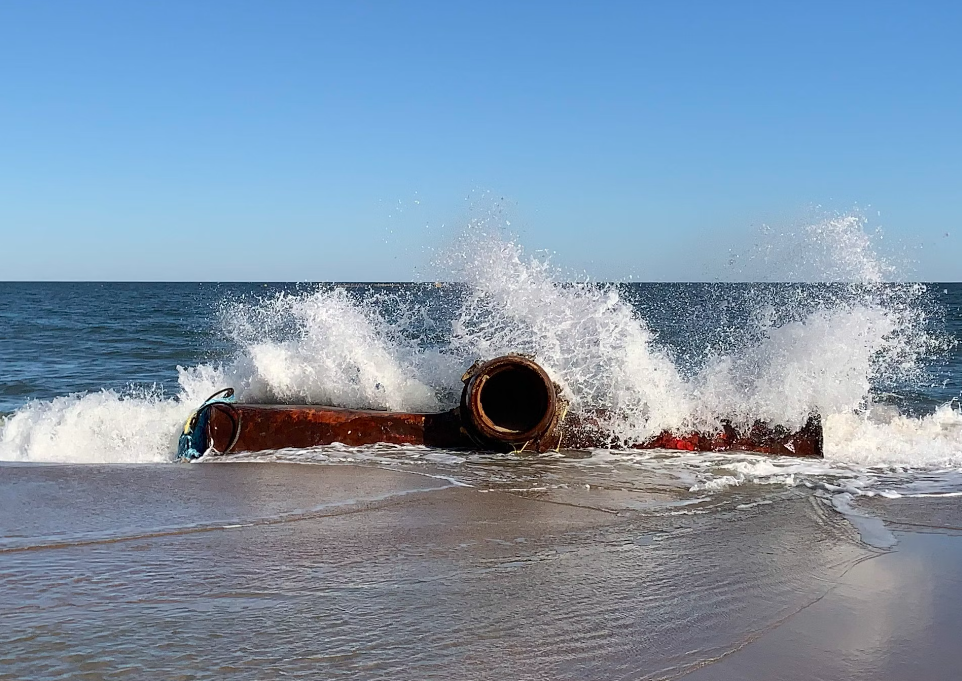The Future of Dredging in Nigeria: A Roadmap for Sustainable Growth

Dredging, the process of excavating and removing sediments from the bottom of water bodies, is an essential pillar of Nigeria’s maritime infrastructure and economic development. With a vast coastline, extensive network of rivers, and a burgeoning maritime industry, the demand for dredging services in Nigeria is significant. However, the dredging sector faces a complex landscape marked by both challenges and opportunities.
This comprehensive article delves into the current state of dredging in Nigeria, examining the multifaceted challenges, exploring promising opportunities, and proposing a path forward for sustainable growth in this critical sector.
The Importance of Dredging in Nigeria
Dredging plays a pivotal role in several key areas in Nigeria:
- Port Development and Maintenance: Regular dredging ensures that ports like Apapa, Tin Can Island, and Onne remain operational, accommodating larger vessels and facilitating international trade.
- Inland Waterways: Dredging of rivers like the Niger and Benue opens up inland waterways for transportation, boosting trade and connectivity within the country.
- Coastal Protection: Dredging can help combat erosion, maintain beaches, and protect coastal communities from flooding.
- Oil and Gas Industry: Dredging is crucial for maintaining offshore platforms, pipelines, and channels used in oil and gas exploration and production.
- Agriculture: Dredging can create irrigation channels and reservoirs, supporting agricultural activities in various regions.
Challenges Facing Dredging in Nigeria
Despite its importance, the dredging industry in Nigeria grapples with a myriad of challenges:
- Inadequate Infrastructure: A lack of modern dredging equipment and facilities hinders the efficient execution of projects.
- Funding Constraints: Securing adequate funding for dredging projects remains a persistent hurdle, often leading to delays and cost overruns.
- Regulatory Framework: The regulatory landscape for dredging is complex and sometimes unclear, creating uncertainty for operators.
- Environmental Concerns: Dredging can have adverse environmental impacts, including disruption of ecosystems, sedimentation, and water pollution. Striking a balance between development and environmental protection is essential.
- Security Challenges: Piracy and insecurity in certain waterways pose risks to dredging operations and personnel.
- Skill Gap: A shortage of skilled dredging professionals and technicians limits the industry’s capacity for growth.
Opportunities in the Nigerian Dredging Sector
Amidst the challenges, several opportunities exist for the dredging industry in Nigeria to thrive:
- Growing Demand: The demand for dredging services is projected to increase as Nigeria continues to invest in port infrastructure, inland waterways, and coastal development.
- Government Initiatives: The Nigerian government has recognized the importance of dredging and has initiated various programs to support the sector.
- Foreign Investment: There is potential for attracting foreign investment in dredging projects, bringing in expertise, technology, and capital.
- Sustainable Practices: Adopting environmentally friendly dredging methods can open up new markets and enhance the industry’s reputation.
- Public-Private Partnerships (PPPs): PPPs can leverage the strengths of both the public and private sectors to execute large-scale dredging projects effectively.
- Technology Adoption: Embracing new technologies like autonomous dredging and data-driven decision-making can improve efficiency and reduce costs.
The Path Forward: Recommendations for Sustainable Growth
To address the challenges and capitalize on the opportunities, the following recommendations are crucial for the sustainable growth of the dredging industry in Nigeria:
- Strengthen Infrastructure: Invest in modern dredging equipment, establish dedicated dredging yards, and upgrade port facilities to enhance operational efficiency.
- Streamline Regulatory Framework: Simplify and clarify the regulatory processes for dredging permits, approvals, and environmental impact assessments.
- Prioritize Environmental Sustainability: Implement strict environmental standards, promote the use of eco-friendly dredging techniques, and invest in regular monitoring and mitigation measures.
- Enhance Funding Mechanisms: Explore innovative financing models, including PPPs, infrastructure bonds, and blended finance, to secure adequate funding for dredging projects.
- Invest in Skill Development: Establish training programs and partnerships with educational institutions to develop a skilled workforce for the dredging industry.
- Encourage Technology Adoption: Embrace automation, data analytics, and other emerging technologies to improve dredging efficiency, reduce costs, and minimize environmental impact.
- Foster Transparency and Accountability: Ensure transparent bidding processes, contract management, and project oversight to prevent corruption and mismanagement.
Conclusion
The state of dredging in Nigeria is a complex tapestry of challenges and opportunities. By addressing the existing hurdles, embracing sustainable practices, and investing in innovation, Nigeria can unlock the full potential of its dredging industry. A thriving dredging sector will not only bolster the nation’s maritime infrastructure and economic development but also contribute to environmental preservation and the well-being of coastal communities.
The path forward requires a collaborative effort among government agencies, private sector players, and local communities. By working together and adopting a long-term vision, Nigeria can navigate the challenges, seize the opportunities, and chart a course for a prosperous and sustainable future in the dredging industry.